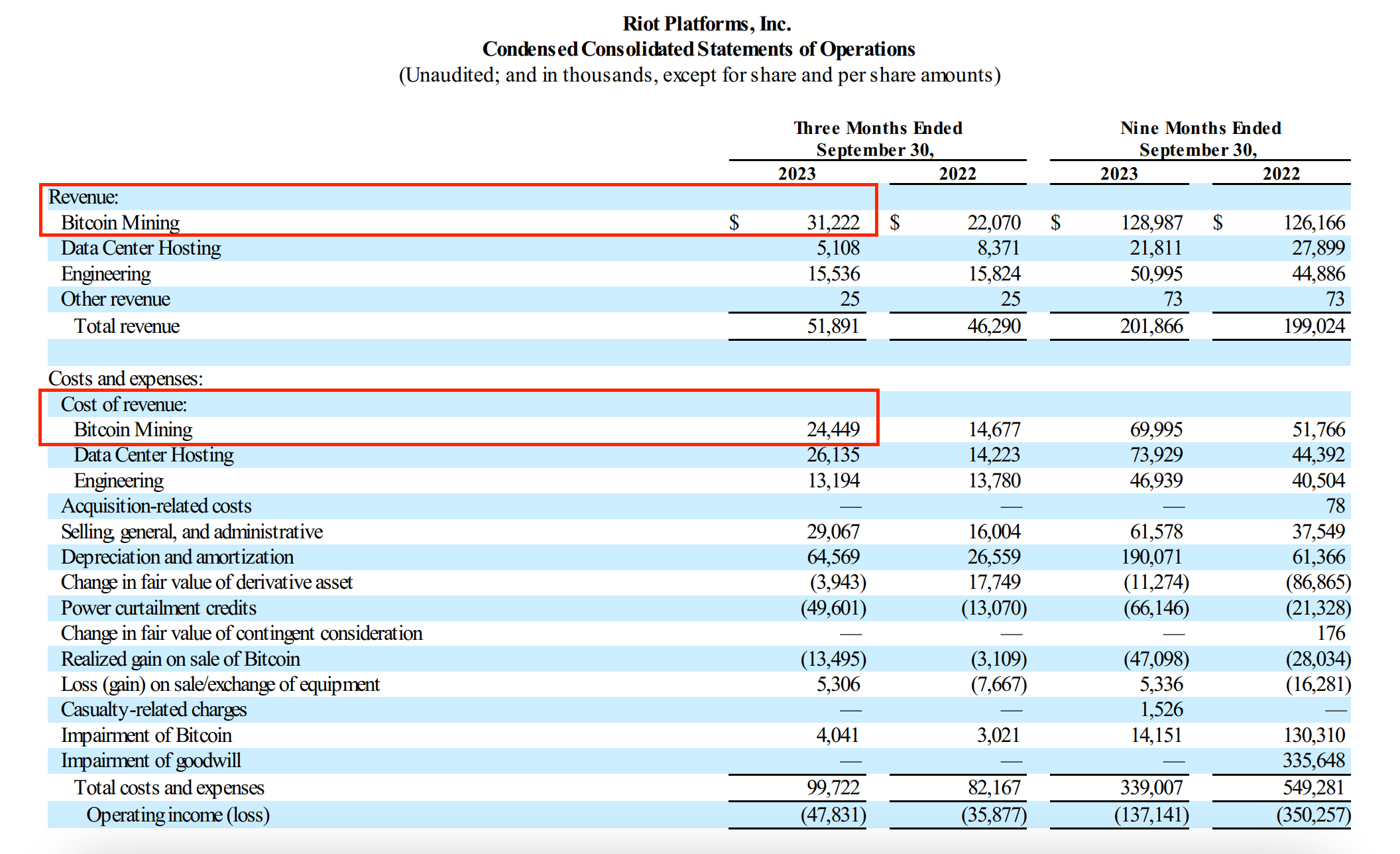Marathon vs. Riot: Analysis of the Real Cost of Mining 1 Bitcoin

Bitcoin mining is the cornerstone of the cryptocurrency industry and cryptocurrency market. Fundamentally, the profitability of mining comes down to one important metric: the cost of producing each Bitcoin.
For publicly traded Bitcoin mining companies, this cost becomes even more important. Because this is essentially what keeps a company running and ultimately profitable. In this report, CryptoSlate will focus on two of the largest public Bitcoin miners: Marathon Digital and Riot Blockchain.
Marathon Digital (MARA) and Riot Platforms (RIOT) are two of the largest public Bitcoin mining companies by market capitalization. Their operational capabilities and finances provide important insight into the state of Bitcoin mining at the highest and most organized level.
All public Bitcoin mining companies, including Marathon and Riot, provide data on mining costs, but the numbers they publish are often higher. Some companies use different accounting treatments for their digital assets, which affects their book value. Some companies have multiple mine sites across different geographic regions, each with different electricity prices and mining capacity.
To better understand the average cost of mining one Bitcoin, CryptoSlate took an alternative approach of dividing each company’s total cost of revenue by the number of Bitcoins it produced. This method is more speculative, but may better reflect actual mining costs.
Dividing the total cost of revenue by the number of Bitcoins produced gives a comprehensive view of the costs incurred during the mining process. This approach goes beyond electricity or operating costs to include all direct and indirect costs associated with mining, such as equipment depreciation, maintenance, personnel and management costs.
By adding up these costs, this method shows how much it actually costs a company to mine each Bitcoin. It accurately reflects economic reality, capturing the full range of costs that impact your bottom line. It helps you understand the efficiency and profitability of Bitcoin mining operations and is a useful tool for analysts and investors looking to understand the financial health and operational efficiency of mining companies.
Marathon Digital (MARA)
Marathon had a very successful year in 2023, expanding its operating capacity through acquisitions and new mining equipment. The company also announced that the acquisition could reduce operating costs by up to 30%, which could have a significant impact on profitability.
However, there is little specific information available directly from Marathon about the company’s mining costs. September analyze The Motley Fool’s Marathon costs less than $19,000 to mine 1 BTC. Company’s latest monthly update December 2023 only specifies technical details on hash rate capacity increases and mining performance, but does not include information on mining costs.
Our primary data source is the company’s 10th quarter report To determine the average cost of mining 1 BTC, we will use the alternative method of dividing the total cost of revenue by the number of Bitcoins produced in the three months ending September 30, 2023. Total cost of revenue is $113.176 million, according to the report. Subtracting gross margin from cost of sales results in $97.849 million.

If a company produced 3,490 BTC during a quarter, dividing the cost of revenue by the number of bitcoins produced would result in mining costs of approximately $28,036.96.
Riot Platform (RIOT)
Riot has spent most of 2023 implementing a long-term strategic plan to ensure the company can remain profitable after Bitcoin’s halving in April 2024. In its Q3 2023 update, the company’s CEO stated that its power strategy results in a mining cost of $5,537 per Bitcoin YTD.
These extremely low costs can be attributed to Riot’s specific business strategy, which involves obtaining power credits from the Electric Reliability Council of Texas (ERCOT). Riot participates in ERCOT’s demand response program, reducing power consumption during peak demand periods in exchange for power credits. These credits reduce Riot’s electricity costs, a major component of Bitcoin mining costs.
We apply the same method to Marathon to find the average cost of mining one Bitcoin for Riot. That is, you divide your cost of revenue by the number of Bitcoins mined in a particular period. According to Riot’s Q3 2023 10-Q filing, Riot’s Bitcoin mining revenue expenses amounted to $24.449 million. During this period, Riot mined 1,106 BTC.

Dividing the total cost of revenue associated with Bitcoin mining by the number of BTC mined, Riot’s average cost to mine one Bitcoin in Q3 was approximately $22,105.78.
This puts Riot’s mining costs closer to Marathon’s $28,036.96. However, a critical component of Riot’s operational strategy is its collaboration with ERCOT. During the third quarter of last year, Riot received approximately $49.6 million in power savings credits from ERCOT.
According to the 10-Q filing, the quarter’s $49.6 million in power savings credits would be reduced by $31.2 million if allocated directly to Bitcoin mining cost revenues based on proportional power consumption. In this case, the adjusted cost of revenue would result in a negative value of -$6.751 million, indicating that the credits offset Riot’s original costs.
Considering this data, the average cost to mine one Bitcoin is approximately -$6,105.78. This is a very unlikely scenario, but it shows how much of an impact power savings credits could have on Riot’s mining operations, and how much they could contribute to overall profitability.
The post Marathon vs. Riot: Analyzing the Real Cost of Mining 1 Bitcoin appeared first on CryptoSlate.



